After Bali and Singapore, I stopped off in Sydney to visit
Leo since I was (relatively) in the neighborhood, and being the awesome friend that she is, she signed us up for a BBQ seafood class at the
Sydney Fish Market! My experience cooking and cleaning seafood is minimal and my time behind a BBQ non-existent, so this was a perfect chance to learn some new skills. And hey, if you're going to do seafood, there are few better places than Sydney! It's the largest fish market in the southern hemisphere. (Actually, it turns out that are tons of things Australia can claim to the best, first, or largest at so long as you append "in the southern hemisphere," but their fish market is indeed incredible.)
 |
| Sydney Fish Market |
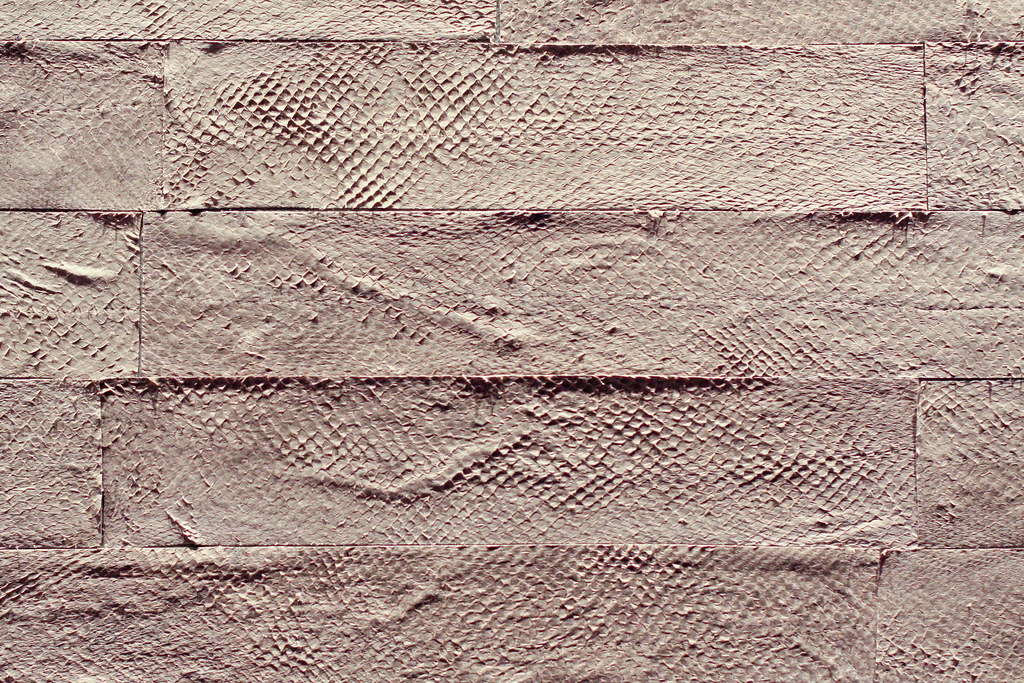 |
| Fish skin wallpaper at the Sydney Fish Market cooking school. |
The class started with an intense overview lecture and demonstration of everything we'd make in class. This was definitely a more polished and professional cooking class than some of my other class experiences. There were even overhead cameras!
First we learned how to quickly and neatly de-shell and de-vein prawns, bamboo skewer them, marinate, and BBQ them. Easy, peasy.
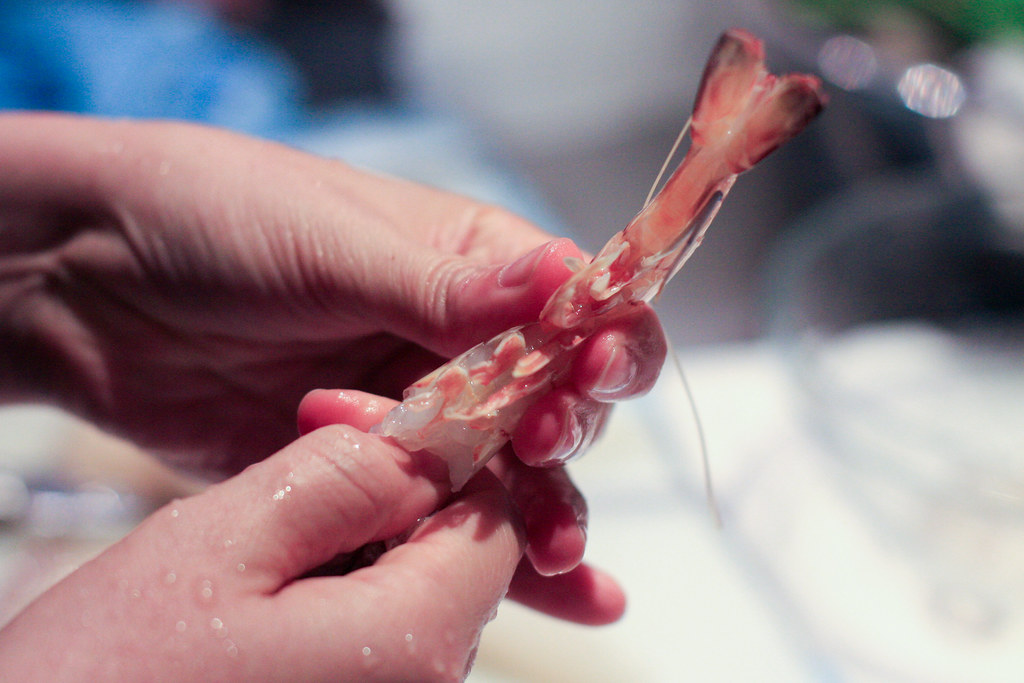 |
| Leo deshelling a prawn. |
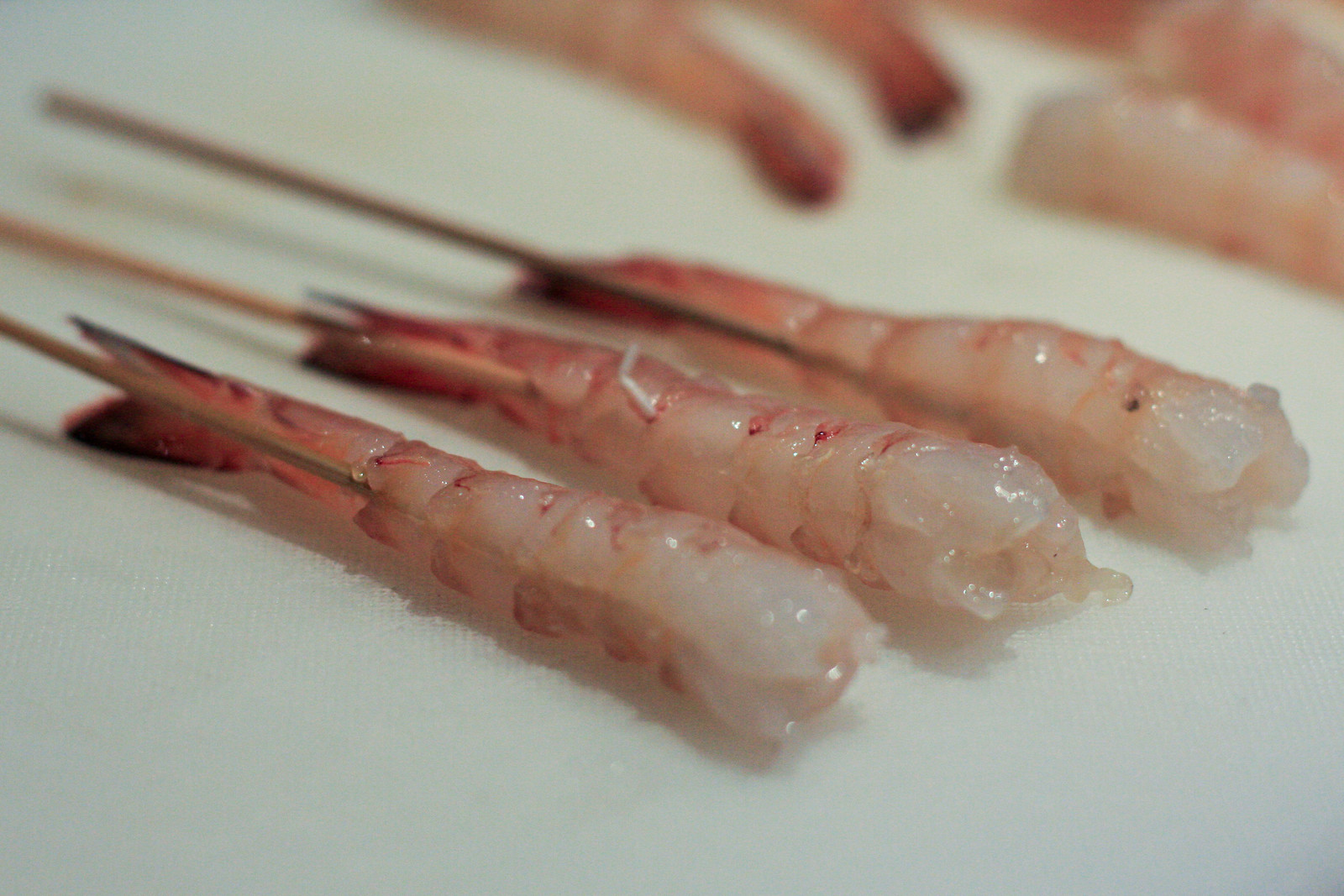 |
| Bamboo skewered prawns. |
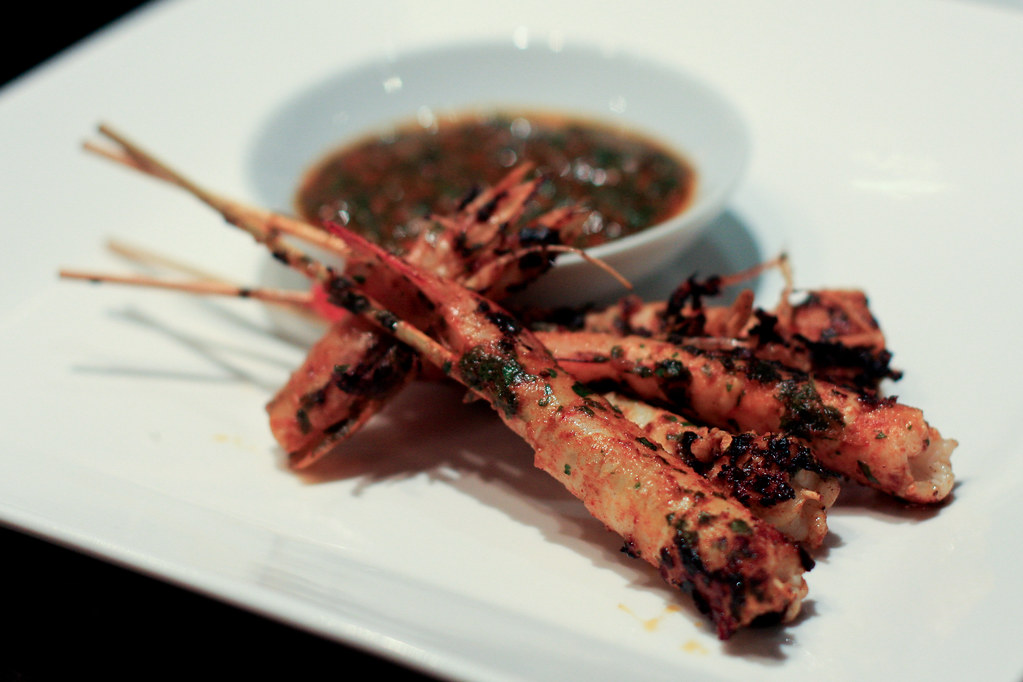 |
| Mmm... BBQ prawns. |
Then we learned how to clean and barbeque a squid. My interaction with squid so far in life has been limited to two distinct ways: fried calamari appetizers and aquarium exhibits. Cleaning and cooking squid was a new experience for me, and probably my favorite of the class. We learned how to deskin the squid, pull out its inner skeleton (which occasionally will be housing a whole fish that it hasn't digested - two for one seafood!), and then prepare the different pieces of meat for grilling. Sydney Fish Market actually shares videos for many of their demonstrations, including
how to clean a squid, so even if you can't make it out to Oz, be brave and try it out at home.
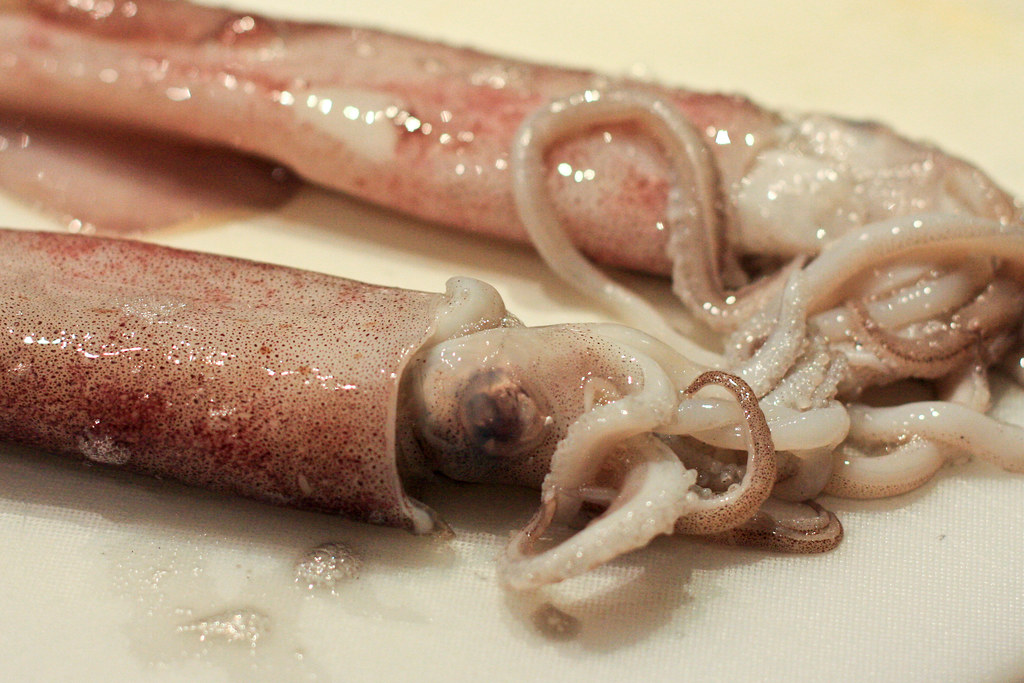 |
| Fresh calamari squid ready to be cleaned. They're actually kind of cute. |
 |
| Thai chili octopus salad. I love how the scored pieces curl up! |
And then we deboned and barbequed a garfish...
and then steamed some mussels. Mussels by themselves aren't particularly exciting to me, but the customary accompaniment of buttery garlic sauce and dipping bread sure is!
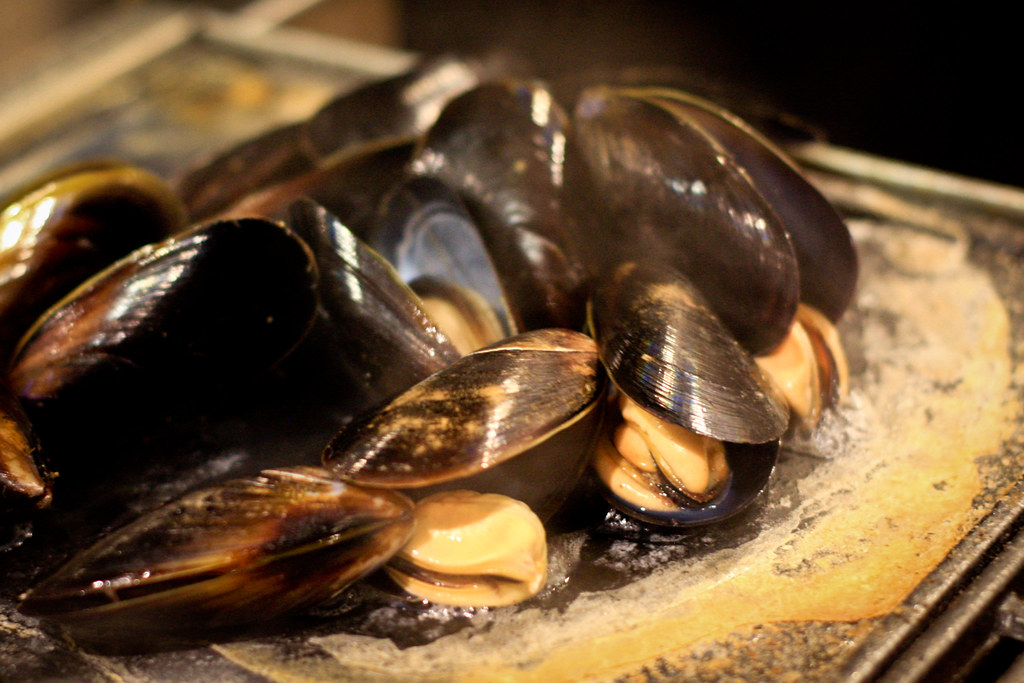 |
| Mussels on the barbie. |
We grilled some salmon somewhere in there too, and then sat down with our fellow classmates to a decadent lunch with chilled white wine. Here are some of the random facts I picked up from the class:
- Traditional wisdom says that if a mussel doesn't open up when cooking, it's bad and shouldn't be eaten. Recent research indicates this isn't necessarily true, however, and we're probably throwing out lots of good mussels! Our teacher said that some healthy, yet stubborn mussels will refuse to open, regardless of how long you cook them, so you can try to pry them open over the sink, and if they smell good,
they’re good to eat. If they're bad, your nose will tell you!
- When using oil for barbequing, you need something with a very high smoke point, and in particular, higher than extra virgin olive oil. If you like the flavor of nuts, peanut oil is a good option. Otherwise, rice bran oil is good and has no extra flavor.
- How do you tell the difference between a girl and boy mussel? Girls are the reddish orange color and boys are the white creamy color. Some people think girls are sweeter; we all know better.
- Calamari is a type of squid, but not all squid are calamari. Calamari is one of the finest and most familiar kinds, so it's often just sold by that name.
- There is a thin membrane on the inner body of a calamari that can lead to a tough, leathery texture when cooked. If your calamari is tough, it's probable this membrane wasn't removed.
The class was fun and our homework was tasty, plus I'm much less intimidated around a BBQ; now I just need access to one for practice!








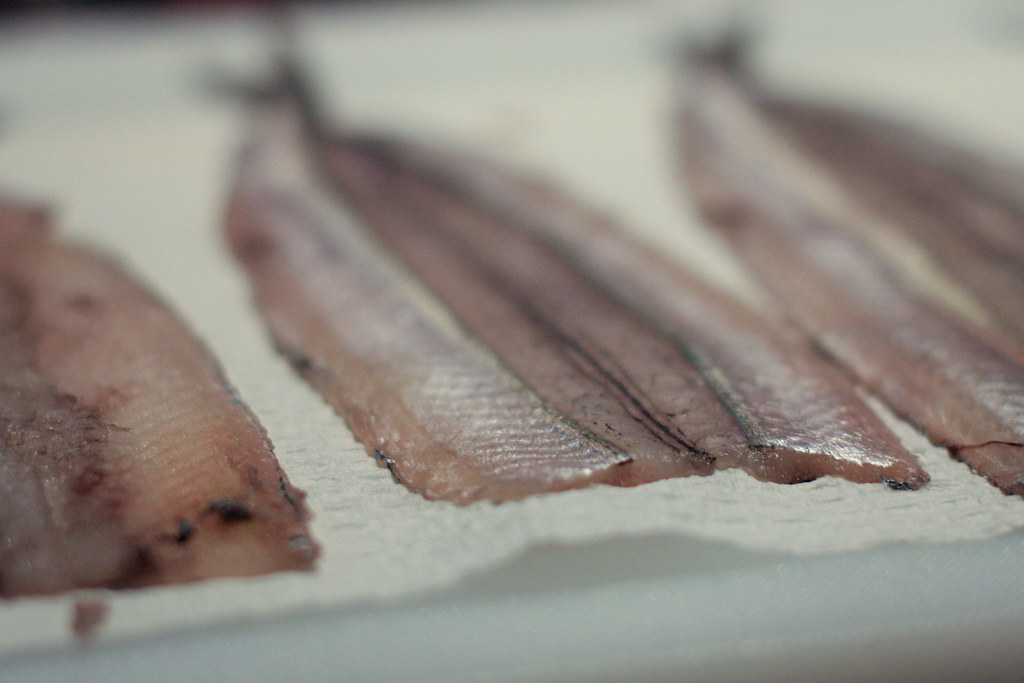
No comments:
Post a Comment